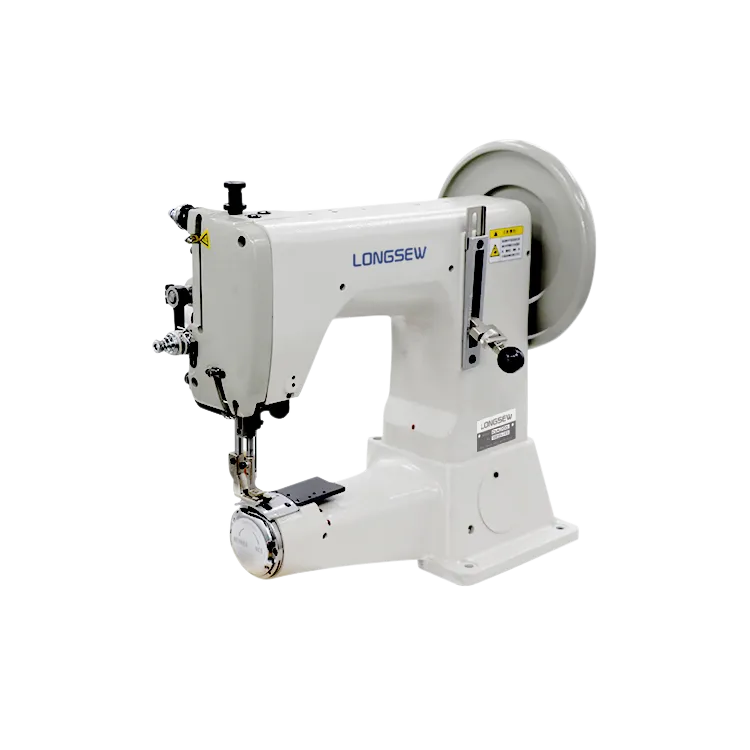Industrial Sewing Machines for Straight Stitching and Zigzag Sewing Techniques
The Versatility of Industrial Sewing Machines A Focus on Straight Stitch and Zigzag
Industrial sewing machines play a crucial role in the manufacturing and textile industries. These machines are designed for high-speed, efficient sewing, capable of handling a wide variety of fabrics and patterns. Among the different types of stitches they produce, the straight stitch and zigzag stitch are two of the most commonly used. Understanding their functionalities, applications, and advantages is essential for anyone involved in garment production or fabric manipulation.
The Straight Stitch
The straight stitch is the most basic and widely used stitch in sewing. Characterized by its linear seam, it is created by interlocking two threads—one from the top and one from the bobbin—through the fabric in a straight line. This stitch is invaluable in numerous applications, including garment construction, hemming, and quilting. One of its primary advantages is its strength, making it an ideal choice for seams that require durability, such as side seams in trousers or the bottoms of skirts.
In industrial settings, sewing machines equipped with straight stitch capabilities can operate at remarkable speeds, often stitching 4000 to 6000 stitches per minute. This high efficiency not only enhances productivity but also allows for precise and consistent stitching, essential for large-scale production runs. The use of straight stitch machines has optimized various manufacturing processes, ensuring that products meet stringent quality standards.
Moreover, straight stitch machines are incredibly user-friendly. They often come with adjustable stitch lengths, allowing operators to customize the stitch based on fabric types. For instance, a shorter stitch length is ideal for lightweight fabrics to prevent puckering, while a longer stitch can be used on heavier materials. This adaptability makes straight stitch machines essential in any industrial sewing workshop.
The Zigzag Stitch
In contrast to the straight stitch, the zigzag stitch is marked by its distinctive zigzag pattern. This stitch is not only functional but also decorative, adding dimension and texture to a variety of sewing projects. The zigzag stitch is commonly used for finishing edges, which prevents fraying, making it indispensable for sewing knit fabrics and stretch materials. It is particularly prevalent in garments that require elasticity, such as activewear and swimwear.
industrial sewing machine straight stitch and zig zag

Zigzag stitching machines are designed to create this versatile stitch, and they often include features that allow for various widths and lengths of the zigzag pattern. The ability to customize these settings enhances the machine's utility, enabling users to tackle a wide range of sewing tasks from garment construction to decorative embellishments.
One of the significant advantages of the zigzag stitch is its flexibility. It can be used to attach elastic bands to fabrics, providing essential stretch and comfort in active or fitted garments. Additionally, the zigzag stitch can be utilized for sewing buttonholes, zippers, and other closures, further expanding its application in industrial sewing.
Combining Both Stitches
In many cases, honest industrial sewing processes utilize both straight and zigzag stitches to leverage their strengths. For instance, a straight stitch can be used for the primary construction seams, providing durability, while a zigzag stitch can be applied along the edges to give the product a professional finish and longevity. This combination allows manufacturers to produce high-quality garments that meet consumer expectations.
Moreover, the advent of computerized sewing machines has enhanced the capabilities of both straight and zigzag stitches. Digital technologies allow for precision control and programming of various stitch patterns, including combinations of straight and zigzag stitches, offering an unprecedented level of design flexibility.
Conclusion
In conclusion, industrial sewing machines equipped with straight stitch and zigzag stitch functionalities are cornerstones of the textile industry. Straight stitches provide strength and durability, while zigzag stitches offer flexibility and decorative options. Together, they enhance the manufacturing process, ensuring that garments are not only functional but also aesthetically pleasing. As technology advances, the capabilities of these machines continue to evolve, allowing for greater creativity and efficiency in sewing practices. Whether for creating basic garments or elaborate designs, the combination of straight and zigzag stitches remains fundamental in the world of industrial sewing.
-
Industrial Cylinder Arm Sewing Machine: Revolutionizing Heavy-Duty SewingNewsJul.28,2025
-
Cylinder Arm Sewing Machine: Perfect for Special Sewing ApplicationsNewsJul.28,2025
-
Cylinder Bed Sewing Machine: Essential for Sewing Complex MaterialsNewsJul.28,2025
-
Heavy Duty Sewing Machine: The Essential Tool for Industrial ApplicationsNewsJul.28,2025
-
Computerized Pattern Sewing Machine: Revolutionizing Precision StitchingNewsJul.28,2025
-
Heavy Duty Industrial Sewing Machine: Power Meets PrecisionNewsJul.28,2025
-
Leather Sewing Machine: The Industrial Standard for Tough MaterialsNewsJul.18,2025





























